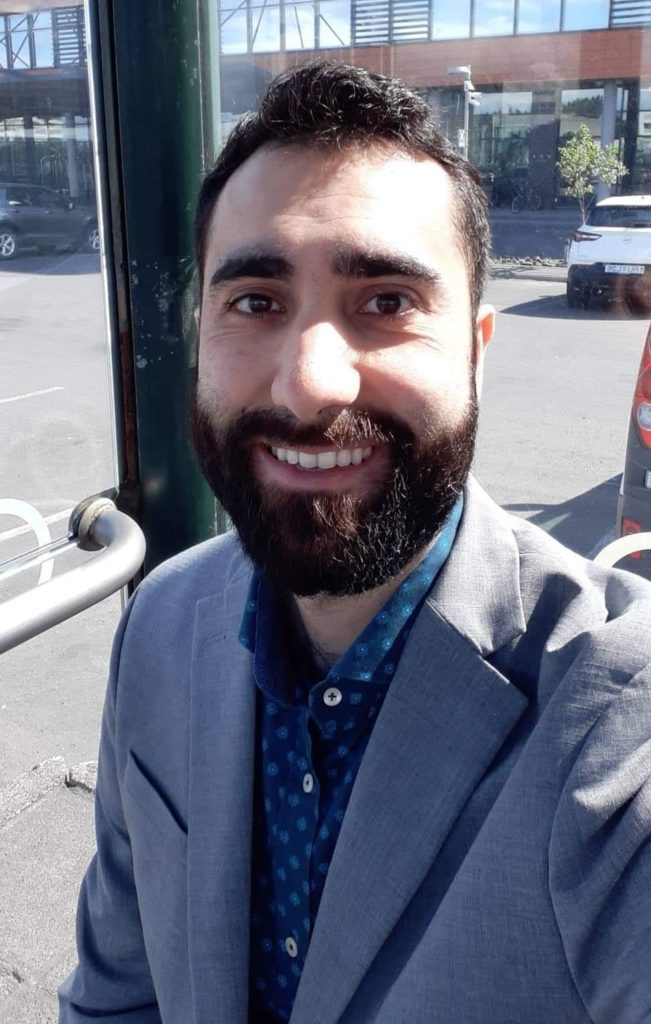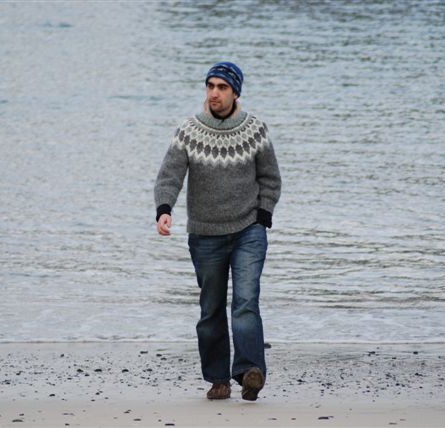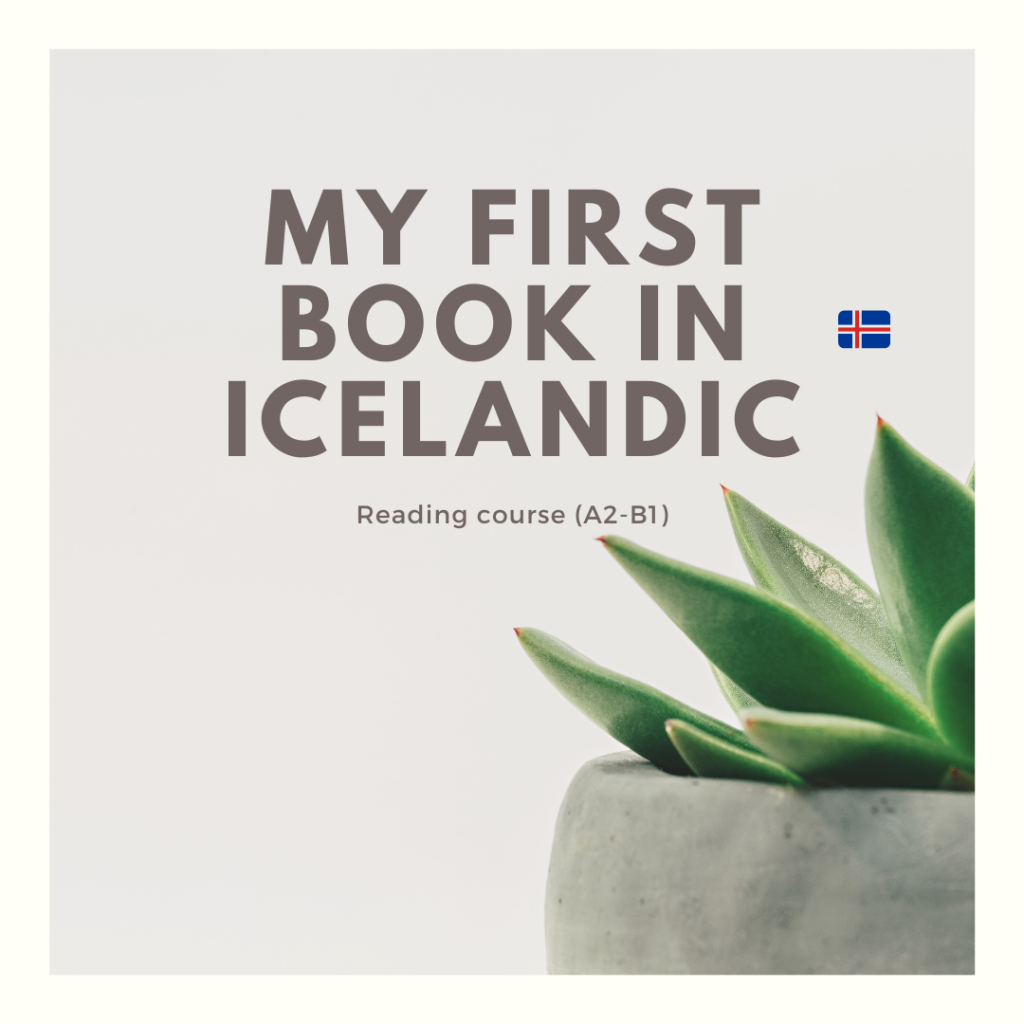Icelandic courses
Basic Icelandic courses (levels A1 and A2):
Intermediate Icelandic courses (level B1):
Private Icelandic classes
Due to my schedule, I can’t offer private classes if I want to cater to my groups of students adequately. Nevertheless, group courses work for 99% of students and are much more affordable. Most people don’t need a private tutor.
I encourage you to try a group course and see if it’s useful. You’ll learn and make progress in Icelandic regardless of the format. You’ll also have access to professional resources, a revisor for your homework, etc. If, in the end, you decide it’s not for you, the risk is low as group courses are much cheaper than private classes. For the cost of a few private lessons, you get 40-50 classes in most of my courses.
For students in Iceland, the risk is even lower, as most get refunds from their union (up to 100% in some cases). Other promotions and discounts also make trying a group course a minimal risk.
If you are interested in private classes because your hours are incompatible with those of group courses, you can watch the recordings of the classes and email me any questions at any time. Learning this way works for many.
Many of my students can’t attend courses in other centers due to their schedules (incompatible hours, changing shifts, etc.), so they sign up here to make progress in the language.
Remember: don’t let what’s perfect be the enemy of what’s good. Take advantage of any opportunity you meet on your way to get further. The sooner you start, the sooner you’ll make progress. Also, importantly, avoid pauses between courses 🙂.
Do you want to learn Icelandic?
I’m happy you do! It’s a fascinating language, and I hope you’ll like it as much as I do. Are you looking for an Icelandic teacher? I’ve taught Icelandic to students of many nationalities in very diverse circumstances, both online and in-person.
Questions? +34644016219 (phone y WhatsApp) +3548462553 | fernan@fernan.eu | Messenger | Hours: Mo-Fr: 15:00-23:00 CEST/CET
I’ve taught Icelandic to workers in Iceland, refugees who have just arrived in the land of fire and ice, teenagers in high school, language enthusiasts who wanted to learn some Icelandic before their holiday in Iceland, people whose partner is Icelandic, etc.
I’ve had in-person students in Iceland and Spain, but thanks to new technologies, I’ve also had students in Argentina, Austria, Brazil, Colombia, Estonia, Germany, Mexico, the Netherlands, Norway, Portugal, Serbia, Singapore, South Africa, Sweden, Switzerland, the UK and the USA.
I moved to Iceland in 2006 as an Erasmus student (an exchange program). During that year, I finished my degree in Foreign Language Teaching.
After that, I earned a BA in Icelandic as a Second Language at the University of Iceland. I also hold an MA in Intercultural Communication, Interpreting, and Translation in Public Services (English<>Spanish).
I’ve worked at the University of Iceland on Tungumálatorg, a language project. Part of my work consisted in making Icelandic learning materials accessible.
As an interpreter in Iceland, I’ve worked at the National University Hospital, health clinics, services centers, social services, police stations, and courts for Spanish speakers. I’ve also interpreted in European Works Councils for Icelandic workers in Spain.
In 2020, I passed the examinations to become a certified translator from Icelandic into Spanish (Icelandic license).

I lived in Iceland for six years and currently live in Burgos (Spain), where I offer Icelandic courses to students worldwide. Yes! In Iceland, too!
Icelandic group courses
I offer the convenience of online classes. Whether you live in Reykjavik, the Icelandic countryside, or another country, your location is not a problem when learning Icelandic.
The maximum number of connected students is ten, but groups are usually much smaller.
You’ll also have access to the recordings of these group online classes, which means that if you can’t attend one day (or at all), you’ll be able to watch the recordings and make progress in your Icelandic. Fun fact: so far, my students’ overall view time watching the recordings is almost 3,000 hours. This means that many of them use this feature.
This feature is very beneficial for those who are busy or have changing schedules (shifts, working on ships where there is not always Internet, tour guides, etc.) Don’t let your schedule prevent you from learning Icelandic.
If you live in Iceland, remember you can get a refund from your union. It is sometimes 50%, 75 % (the most common refund), or even 100%. Ask your union to find out whether you can get a refund from them for Icelandic courses.
If you live in another country, you may have access to scholarships, easy payment terms, etc. It depends on the country. Send me a line para más información.

Why take Icelandic classes?
If you’re moving to Iceland, I am sure I don’t need to emphasize that speaking Icelandic is essential. You’ll need it professionally and socially, both of which are important for your emotional well-being. The difference in your personal experience between being able to interact with people in Iceland in Icelandic or only in English can be huge. You may get by in some areas without Icelandic, but you’ll miss certain things, and no one wants that for themselves.
Things feel much better if you know Icelandic. Your coworkers or classmates ask about you, they open their homes to you, they invite you to parties, etc. They consider you an Íslandsvinur (a friend of Iceland).
Because of this, if you’re moving to Iceland, I recommend starting Icelandic courses as soon as possible. You will need time for this, and this way, you’ll arrive with a head start.
Also, if moving to Iceland is not in your plans (or at least not now), there are many reasons people decide to learn this language:
- – They think it’s beautiful. The language we are motivated to learn often is not the one that has millions and millions of speakers. Motivation is key.
- – They want to understand Icelandic music by artists and groups.
- – They want to be able to read the Icelandic sagas in their original version. Even though they are from the Middle Ages, they are accessible to a Modern Icelandic speaker.
- – Their partner and the partner’s family speak it, and they want to follow everything in family meetings.
- – They are interested in Scandinavian languages, and Icelandic is the closest language to Old Norse (the northern equivalent of Latin). If you want to study other Scandinavian languages, you’ll be able to read Faroese quite quickly and have an excellent base for languages such as Danish, Norwegian, and Swedish.


The question that always comes up: Is it difficult?
Icelandic presents some challenges and requires patience. Because of this, having a teacher/tutor is essential so that you learn Icelandic by getting things done. I will not lie; it’s not easy, but you must also know that no one says you can’t do hard things. If you feel learning languages is daunting, you must know you’ve already done difficult things in your life, and nothing has to stop you from learning Icelandic. These are some key ideas that will help you realize you can, of course, do this:
- – Learning it is perfectly feasible. It’s not the hardest language in the world as some articles claim.
- – We are used to learning languages such as English, French or Spanish, which happen to lack features Icelandic has. However, many other widely spoken languages have these features and people speak these languages (it may be your case).
- – You’ll be able to read any text as soon as you learn the main pronunciation rules. Writing and speaking are closely linked and most times you’ll know how to pronounce things right. If you happen to speak Spanish, or a language with similar sounds, you’ll have to learn some new sounds for Icelandic, but it’ll be easier overall than some other languages (this depends on your language background).
- – Consider that English or Spanish are easy-peasy in the beginning but things get complicated later. Each improvement in these languages when you are at an intermediate or advanced level is complicated. Icelandic works the other way round: the hardest part is the beginning. It’s like cycling up a mountain pass: when you’ve finished, you’re up and move effortlessly. In Icelandic, there’s a moment where you just speak. The trick: you need to find the balance between demanding too much of yourself and procastinating. That is, learn Icelandic slowly but surely and be kind to yourself.
¿Cómo empezaremos?
En la primera clase de Islandés I te enseñaré los recursos que necesitas (todo lo que nos dé tiempo) para que empieces a estudiar y para que seas independiente en tu aprendizaje. Entre otras cosas:
- Qué diccionarios usar
- Dónde encontrar las palabras declinadas y los verbos conjugados
- Cómo escribir en el ordenador y en el móvil/tableta en islandés
- Pronunciar lo que lees (es muy regular)
- Comprobar la ortografía de los e-mails que escribirás
- Y cualquier otra cosa que necesites saber
Si no es la primera vez que te apuntas a clases de islandés, ponte en contacto conmigo igualmente por e-mail, WhatsApp o Messenger y vemos cómo podemos trabajar juntos para que avances.








